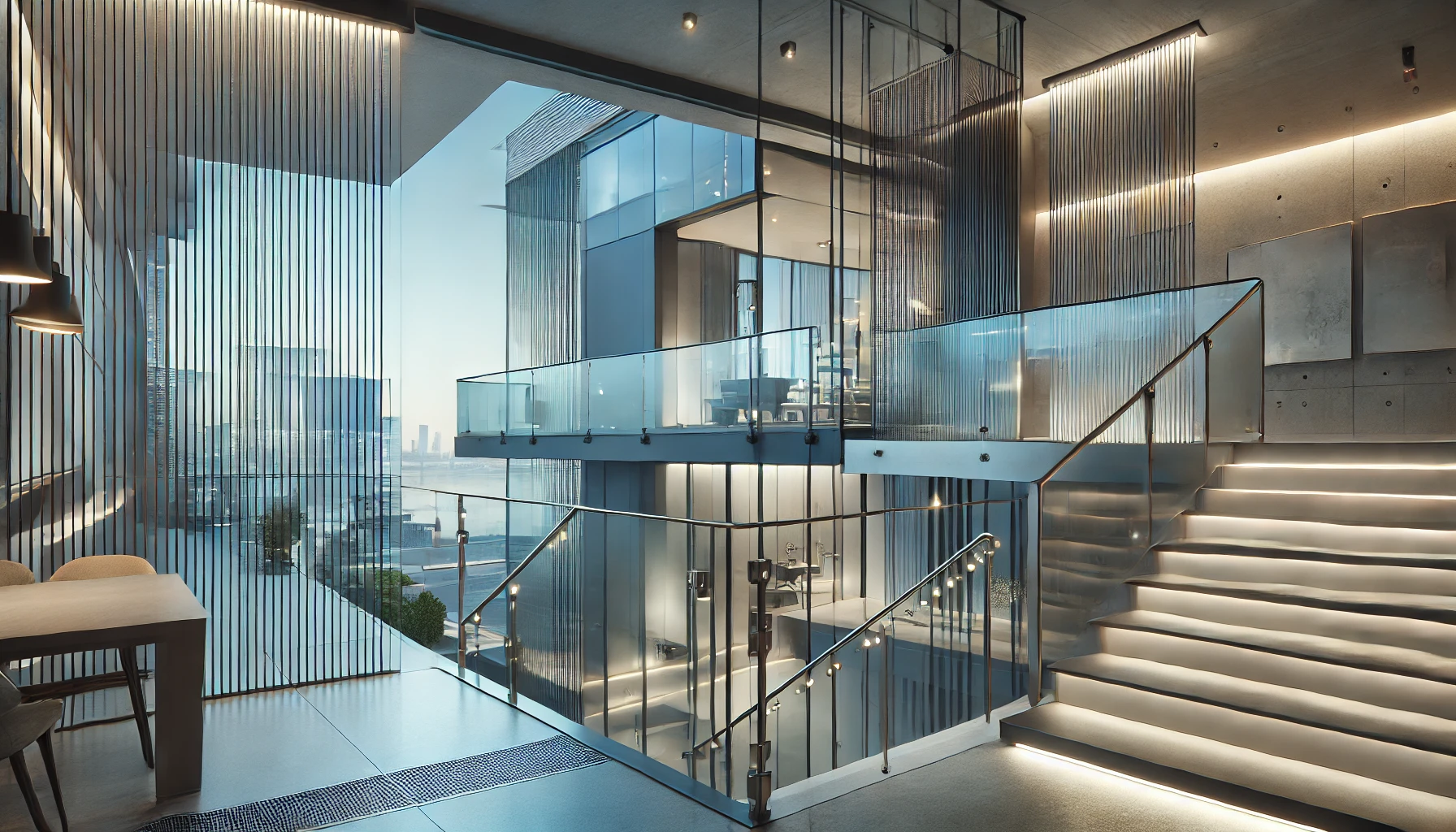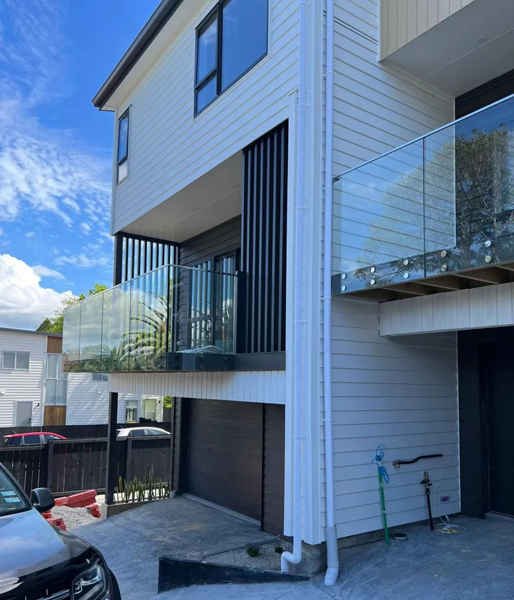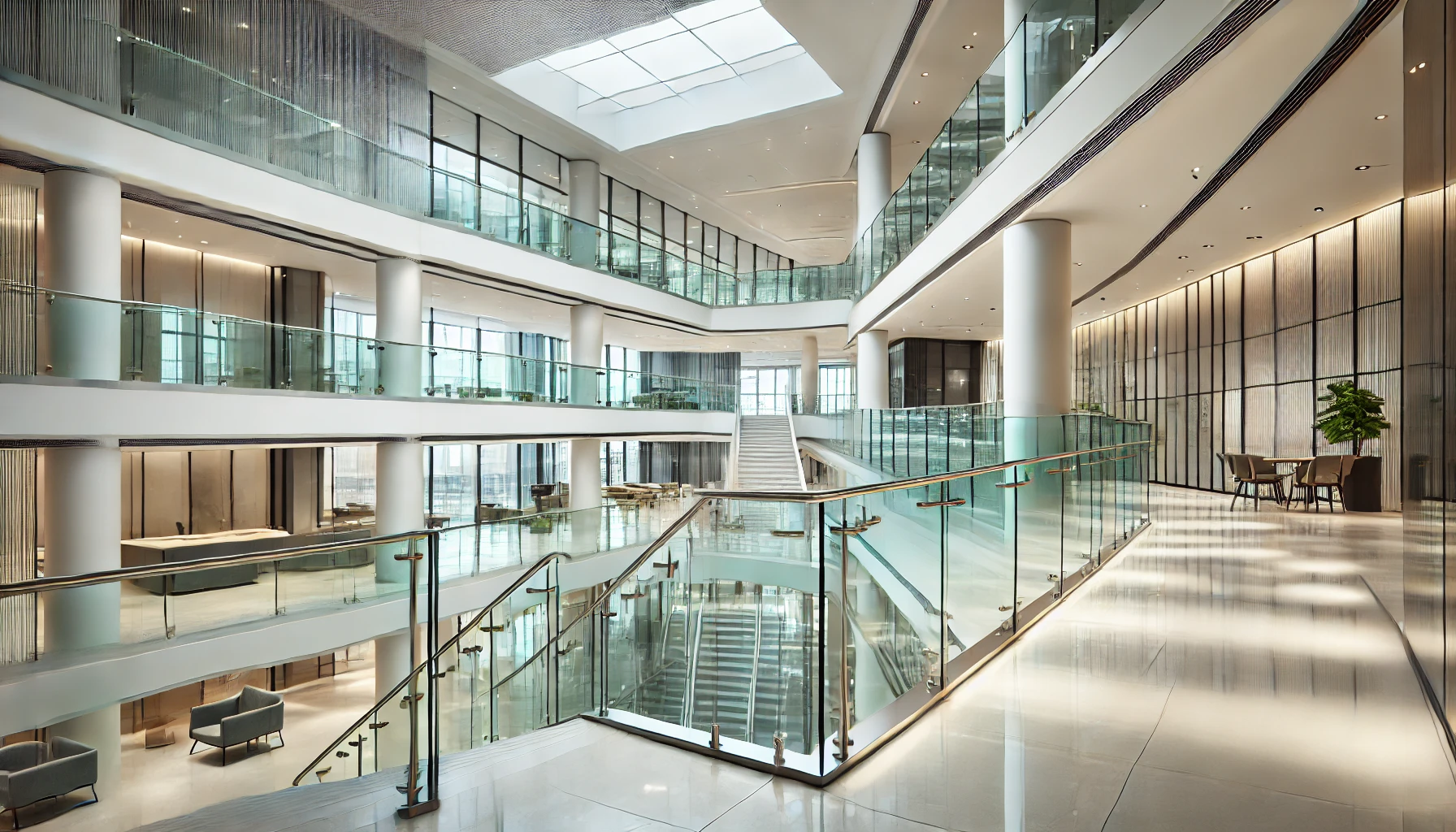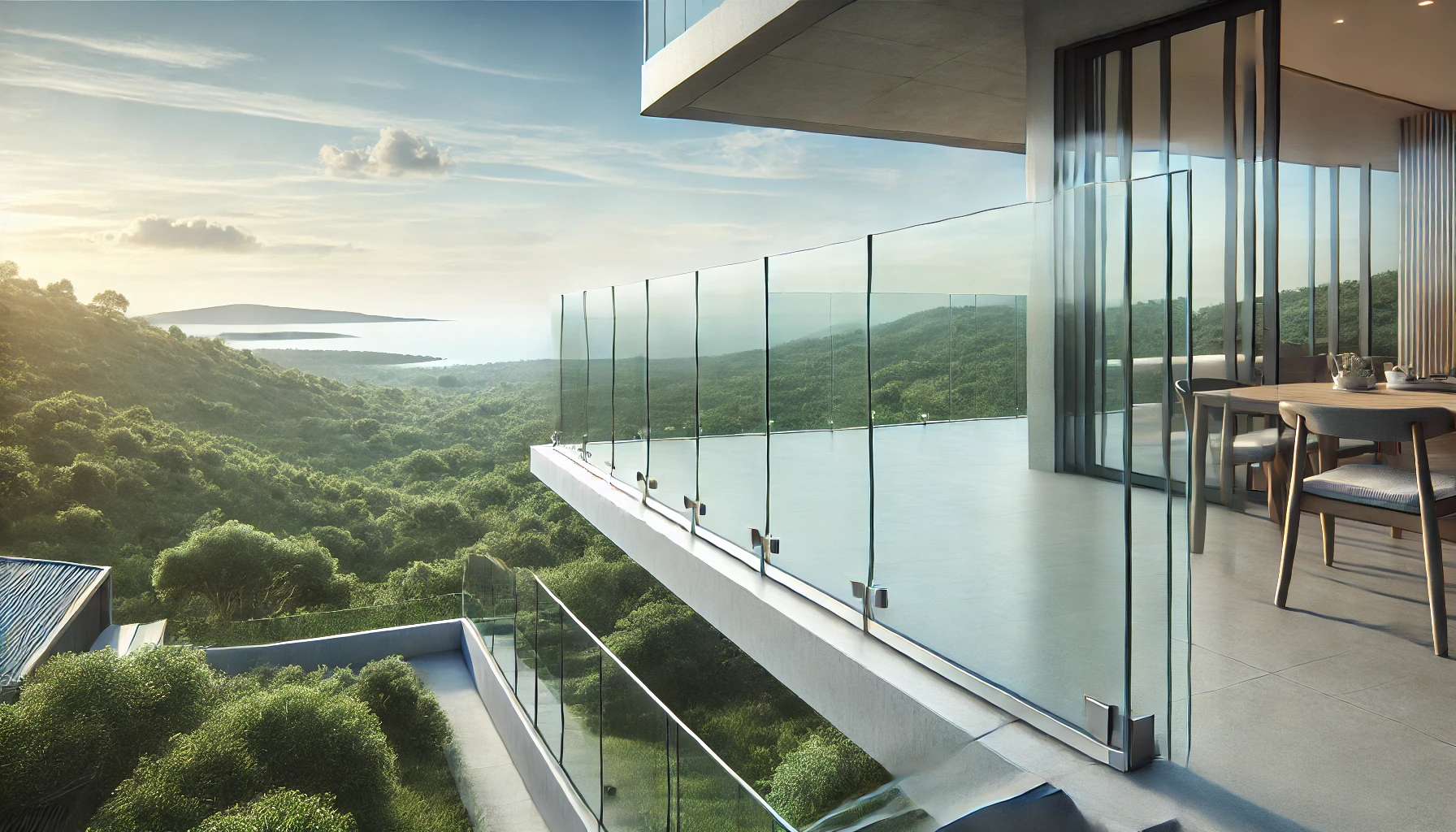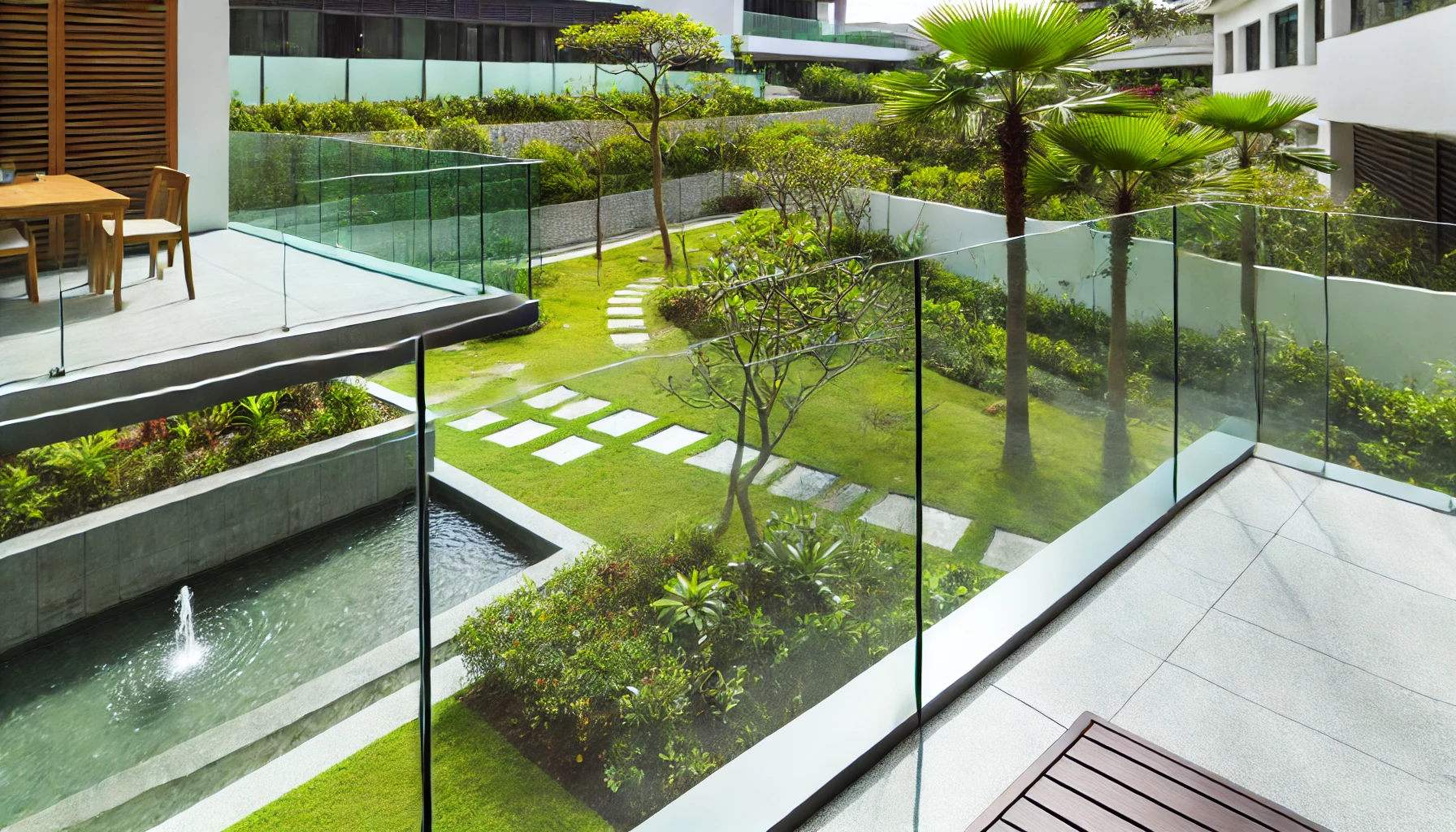Introduction
Modern railing design has evolved significantly in recent years, driven by advancements in materials and technologies that enhance both functionality and aesthetics. Whether used in residential or commercial settings, railings are no longer just functional barriers; they are integral elements of architectural design. This article explores some of the most innovative materials and technologies currently shaping the world of modern railing design, offering insights into how these developments are setting new standards for safety, durability, and style.
1. Advanced Materials in Railing Design
The choice of materials in railing design has expanded beyond traditional options like wood and metal. Today, designers and architects are exploring a variety of advanced materials that offer superior performance and aesthetic appeal.
- Composite Materials: Composite materials, made from a combination of wood fibers and plastic, are gaining popularity for their durability, low maintenance, and environmental benefits. These materials resist rot, insects, and UV damage, making them ideal for outdoor applications. Composite railings can mimic the look of natural wood while offering better longevity and less upkeep.
- Stainless Steel: Stainless steel remains a top choice for modern railings due to its strength, corrosion resistance, and sleek appearance. Advances in finishing techniques, such as powder coating and brushed finishes, have expanded the aesthetic possibilities of stainless steel, allowing it to fit seamlessly into both contemporary and traditional designs.
- Aluminum: Lightweight, corrosion-resistant, and versatile, aluminum has become a popular material for railings, especially in coastal and high-humidity environments. Aluminum railings can be anodized or powder-coated in various colors, providing a durable and attractive finish that requires minimal maintenance.
- Glass and Acrylic: Glass and acrylic railings offer a minimalist, modern aesthetic with the added benefit of transparency, which maintains unobstructed views. Laminated glass and acrylic panels provide added safety by holding together if broken, and they can be tinted or frosted for privacy or design effects.
- Corten Steel: Known for its weathered appearance and durability, Corten steel is used in railing designs where a rustic or industrial look is desired. Over time, Corten steel develops a protective rust-like patina that prevents further corrosion, making it a low-maintenance option for outdoor railings.
2. Innovative Technologies in Railing Systems
Alongside new materials, modern railing design is also being transformed by innovative technologies that enhance functionality, safety, and ease of installation.
- Smart Glass: Smart glass technology is making its way into railing design, offering the ability to switch between transparent and opaque states. This technology is particularly useful in environments where privacy or light control is important. For example, glass railings with smart glass can provide clear views when desired or become opaque for privacy or to reduce glare.
- LED Lighting Integration: Integrating LED lighting into railing systems is a growing trend that adds both safety and aesthetic value. LED lights can be embedded within the railing posts, handrails, or even within the glass panels themselves. This not only improves visibility at night but also enhances the visual appeal of the railing, creating a striking effect that highlights the architectural features of a space.
- Modular Railing Systems: Modular railing systems are designed for easy installation and customization. These systems consist of pre-fabricated components that can be quickly assembled on-site, reducing installation time and labor costs. Modular systems are particularly advantageous for large commercial projects or multi-unit residential developments where consistency and efficiency are key.
- Corrosion-Resistant Coatings: New advancements in coatings have significantly improved the durability of metal railings, especially in harsh environments. Powder coatings, for example, provide a durable, weather-resistant finish that protects against corrosion, UV damage, and wear. These coatings are available in a wide range of colors and textures, allowing for greater design flexibility.
- Cable Railing Systems: Cable railings offer a sleek, modern look with minimal visual obstruction. Made from high-strength stainless steel cables, these systems are ideal for locations where maintaining an open view is a priority. Advances in tensioning technology have made cable railings easier to install and maintain, ensuring they remain taut and secure over time.
3. Sustainability and Eco-Friendly Options
As sustainability becomes an increasingly important consideration in architectural design, the railing industry is responding with eco-friendly materials and processes.
- Recycled Materials: Many modern railing systems incorporate recycled materials, such as recycled aluminum or composite materials made from reclaimed wood and plastic. These options reduce the demand for virgin materials and help minimize the environmental impact of construction projects.
- Sustainable Manufacturing Practices: Manufacturers are adopting more sustainable practices, such as reducing energy consumption during production, using water-based finishes, and implementing waste-reduction initiatives. These efforts contribute to the overall sustainability of the railing industry and align with the growing demand for green building materials.
- Biophilic Design: Biophilic design, which seeks to connect occupants with nature, is influencing railing design as well. This approach might involve using natural materials like wood or incorporating plant life into railing structures. For example, planters integrated into railing systems can bring greenery to balconies, terraces, or rooftops, enhancing the connection to the natural environment.
4. Case Studies: Innovative Railing Designs in Practice
Examining real-world applications can provide valuable insights into how these materials and technologies are being used in innovative ways.
- Case Study 1: The High Line, New York City
The High Line is a prime example of innovative railing design in an urban setting. The elevated park features custom-designed railings made from powder-coated steel and glass. The railings incorporate LED lighting and integrate seamlessly with the landscape architecture, providing safety while enhancing the aesthetic appeal of the park. - Case Study 2: The Edge, Amsterdam
Known as one of the most sustainable office buildings in the world, The Edge in Amsterdam uses advanced railing systems made from recycled materials and featuring integrated smart glass. The building’s design prioritizes natural light and energy efficiency, with railings that contribute to both the sustainability goals and the modern aesthetic of the space. - Case Study 3: The Getty Center, Los Angeles
The Getty Center’s architecture showcases the use of Corten steel railings that complement the building’s overall design while withstanding the outdoor elements. The railings have developed a unique patina that enhances their visual appeal and connects the modern design with the natural landscape of the surrounding hills.
5. Future Trends in Railing Design
Looking ahead, several emerging trends and technologies are likely to shape the future of railing design.
- Integration with Smart Home Systems: As smart home technology becomes more widespread, we can expect to see railings that integrate with these systems. For instance, smart railings could include sensors that detect motion and adjust lighting or opacity settings accordingly, enhancing both security and convenience.
- Customization and Personalization: Advances in manufacturing techniques, such as 3D printing and CNC machining, are making it easier to create customized railing designs. This allows for greater personalization in both residential and commercial projects, with railings that can be tailored to specific aesthetic and functional requirements.
- Enhanced Durability and Lifespan: Ongoing research into new materials and coatings is likely to yield railings with even greater durability and lifespan. For example, self-healing materials that can repair minor damage or scratches are being explored, which could significantly extend the life of railing systems in harsh environments.
Conclusion
The world of modern railing design is being transformed by innovative materials and technologies that offer enhanced functionality, durability, and aesthetic appeal. From smart glass and LED lighting to sustainable materials and modular systems, these advancements are setting new standards for what railings can achieve. As these trends continue to evolve, architects and designers will have even more tools at their disposal to create railing systems that not only meet the demands of modern architecture but also contribute to the overall sustainability and beauty of the built environment.

